Gallery of Talking Boards
Planchettes
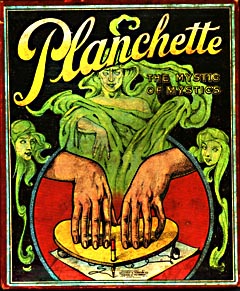
|
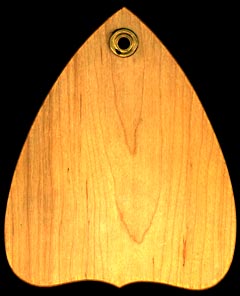
|
| This is a particularly fine example of a pretty maple automatic writer circa 1875 by Selchow and Righter. The instructions state that Planchette the Mystic of Mystics is the "scientific planchette from the original pattern, first made in 1860." Although the phantasms on the front of the box are obviously not of this world, there is no mention of spiritual communion of any kind. |
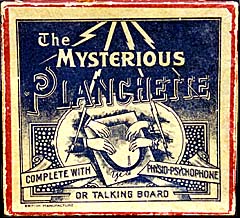
|
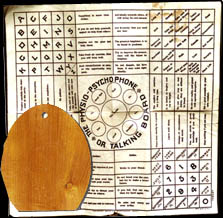
|
| The Mysterious Planchette labeled British Manufacture, an English import, did double duty as a writing planchette and as a message indicator for the imaginatively named Physio-Psychophone. In reality, the Physio-Psychophone was nothing more than a piece of wax paper with numbers, letters and fortune cookie aphorisms like: "Try to improve the present, then the future will be brighter." |
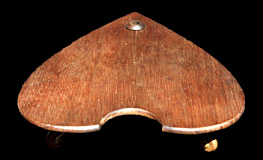
|
Kirby and Company made this mahogany Kirby's Planchette in the 1860's during the planchette craze of that era. The instructions are conveniently glued to the bottom of the board and state: "For some persons, Planchette moves in a few moments, and for others from ten to fifteen minutes is needed to charge the board." Kirbys came in several different woods, rubber, and a glass model that made reading the message underneath easier. |
| Kennard Novelty Company's first planchette was this paddle shaped four-legged monster. It measured nearly eight inches in length and had legs two and one-half inches long. The directions on the bottom ask you to "place the board upon the knees of two persons, lady and gentleman preferred, with the small table upon the board. Place the fingers lightly but firmly, without pressure, upon the table so as to allow it to move easily and freely." |
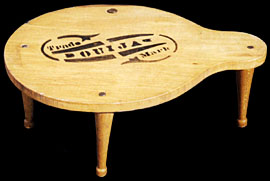
|
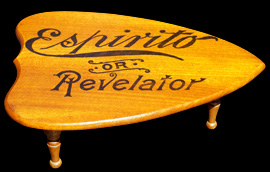
|
W.S. Reed's beautiful 1891 Espirito Revelator planchette may have been the very first heart shaped message indicator to grace a factory talking board. We think this chiefly because similar era planchettes from Ouija Novelty Company's factories, with their distinctive rear center points, were nearly carbon copies of the Revelator. Ouija Novelty Company's dropping of the paddle and adoption of the heart seemed to coincide neatly with Reed's legally motivated decision to cease production of the Espirito. |
| Smaller than the earlier models and heart-shaped like Ouija Novelty Company's, William Fuld's planchette was still jumbo sized. Gone is the rear point. Notice also the slight difference in the Ouija logo and the absence of the two "arrowheads" on either side of the Ouija name. |
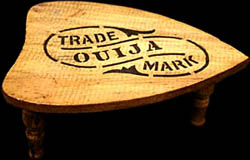
|
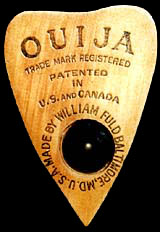
|
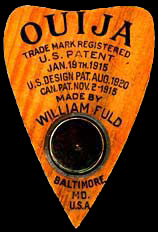
|
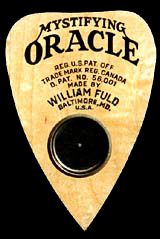
|
| Beginning around 1915, William Fuld planchettes sported a fancy new circular window to improve the viewing of the letters. In the 1920s, patent dates signaled other design changes like the metal ring surrounding the viewing window. Many manufacturers of talking boards sold less expensive boards in addition to their premium models. William Fuld was no exception. His Mystifying Oracle was a Ouija board in all respects except for the name and the price. In other words, it was the same only different. |

|
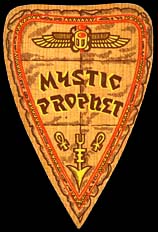
|
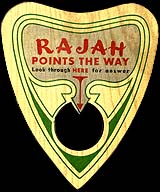
|
| Haskelite's standard planchette was the Mystic Hand with its withered witch finger descending from the clouds. The Egyptian themed Mystic Board fared better treatment with the stylishly decorated Mystic Prophet. The message indicator for the Rajah Far East Talking Board from Gift Craft let you know exactly where to look to find your answers. |